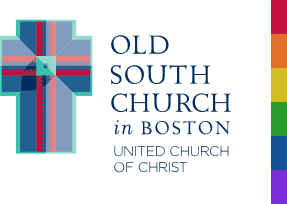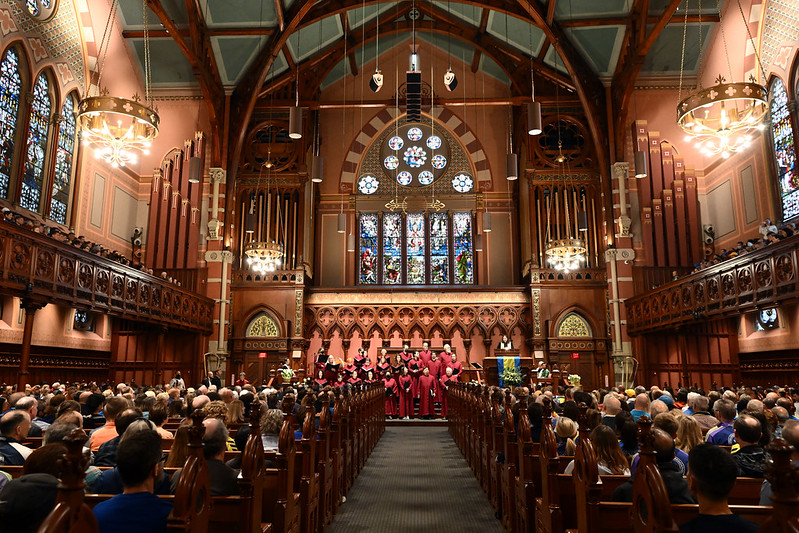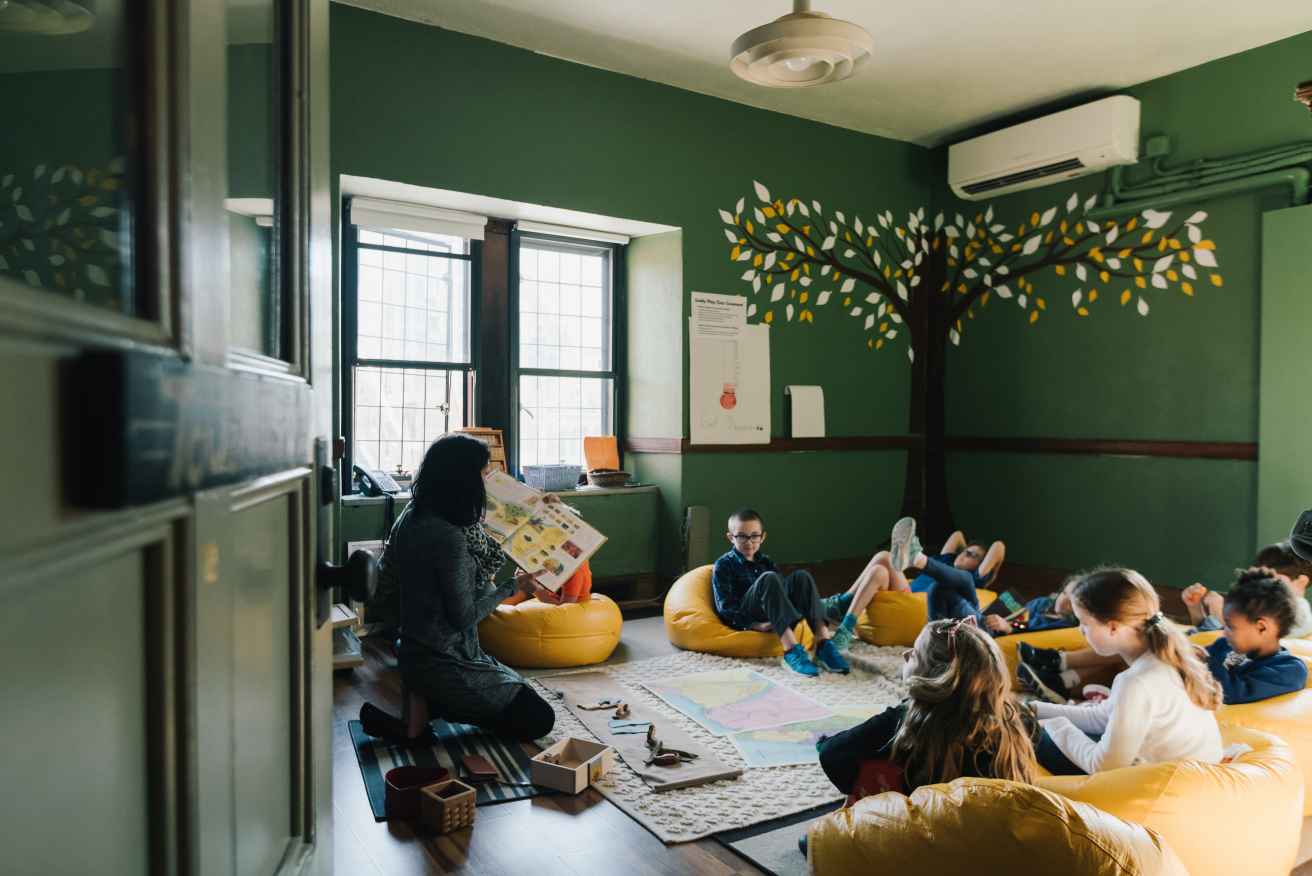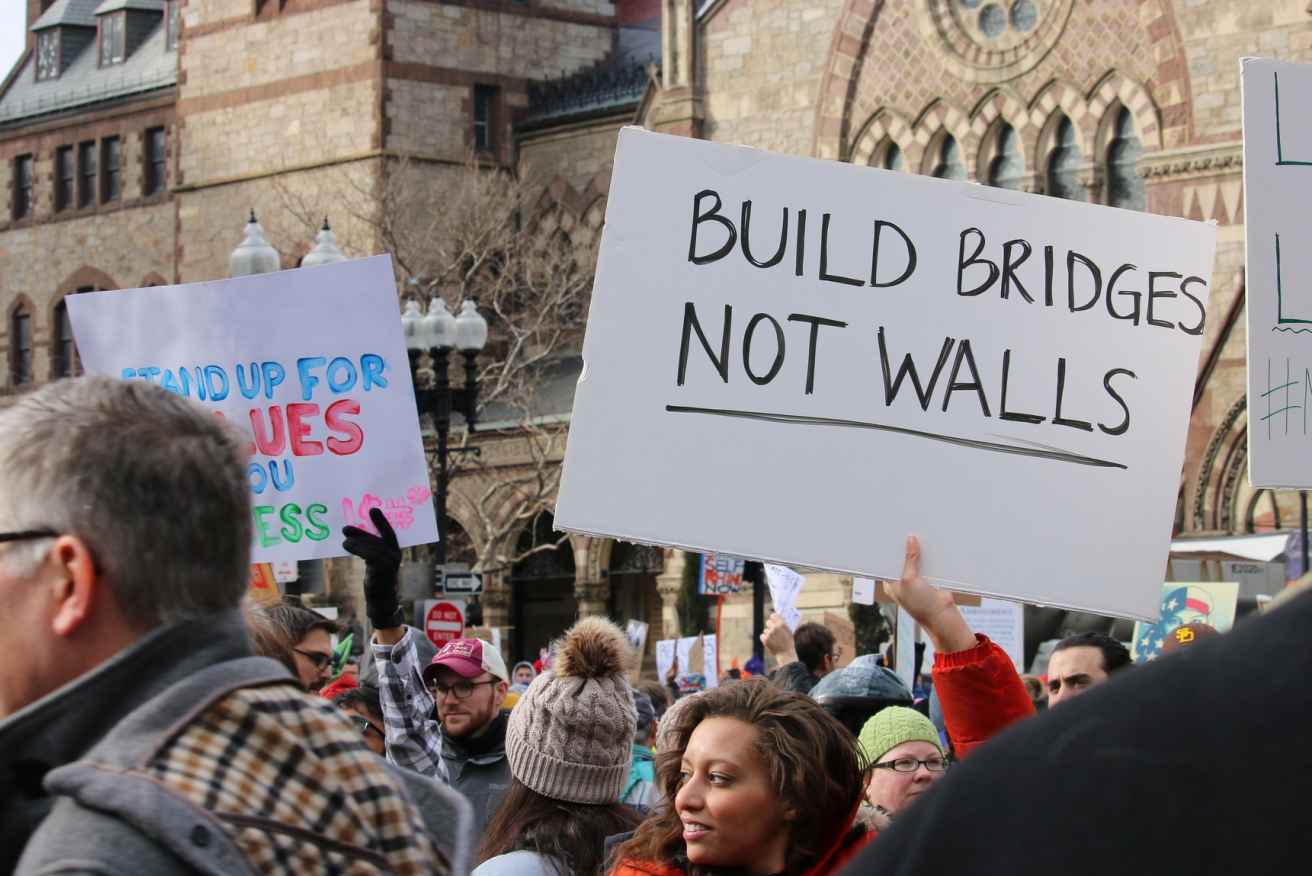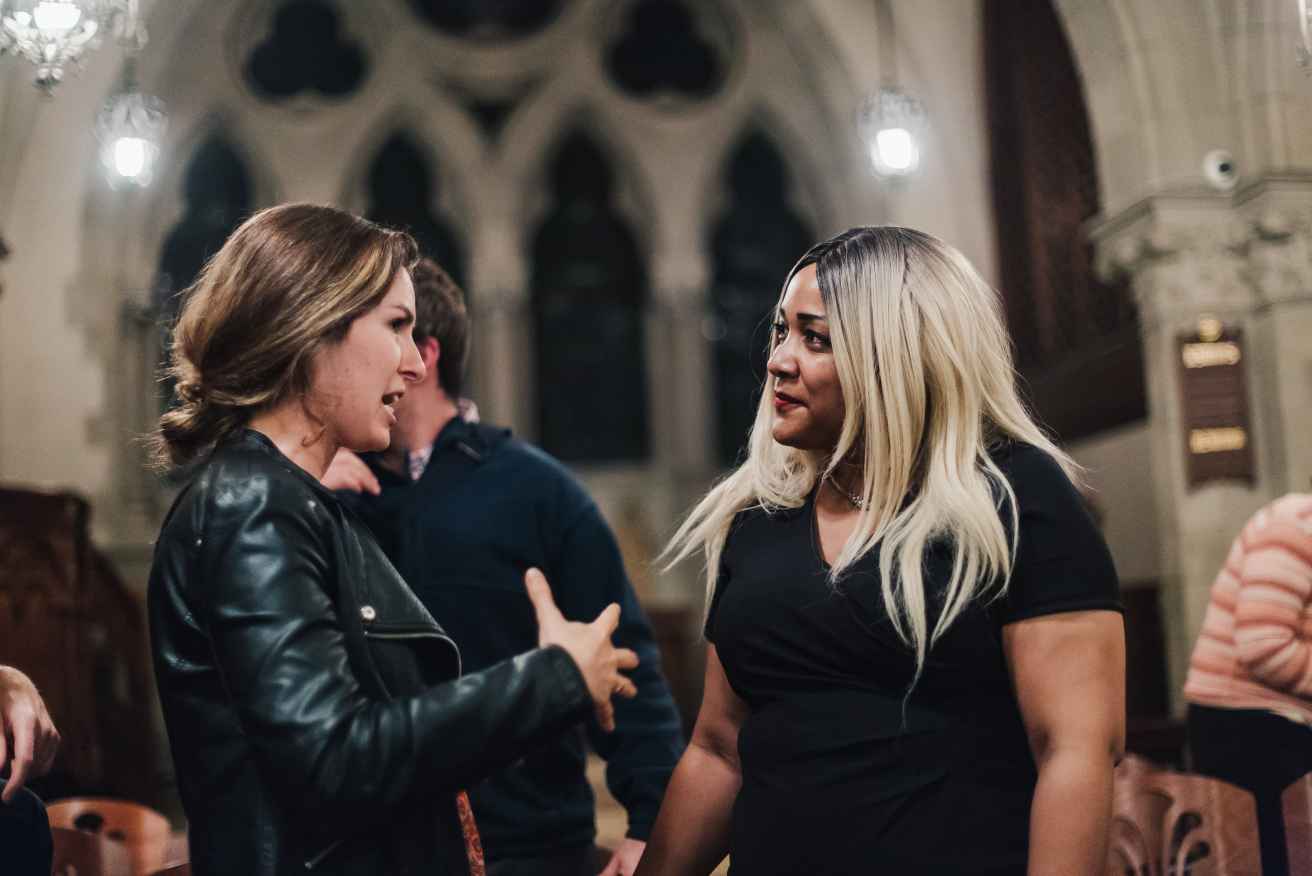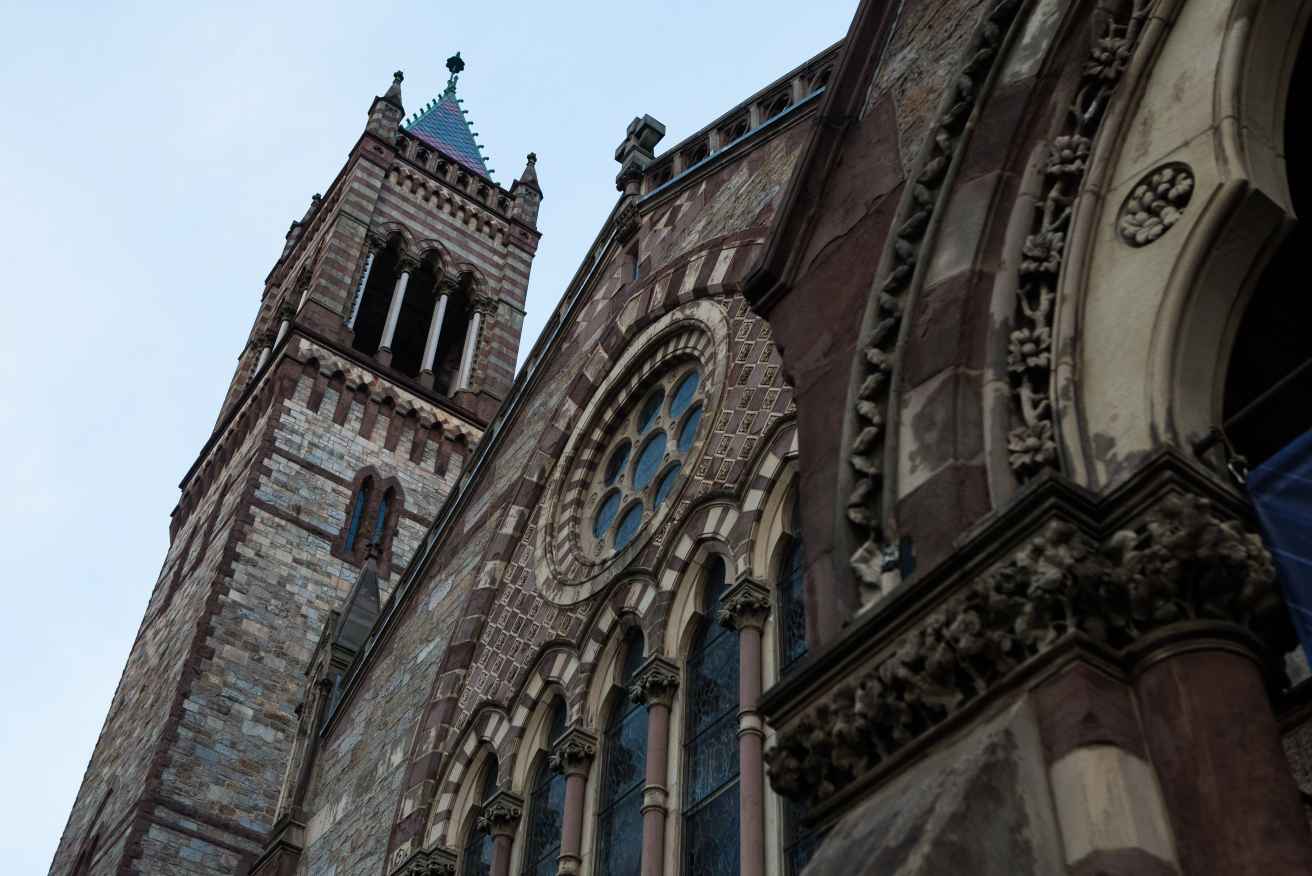Festival Worship - Fifth Sunday in Lent
Festival Worship - Fifth Sunday in Lent
Take and Eat
Transcript
Imagine in your mind’s eye that you are looking at a painting of the Last Supper. Gathered for the Passover meal, Jesus and his disciples are seated at the table. Jesus is in the middle. In his left hand, Jesus holds a loaf of bread. With his right hand, he is blessing the bread. To Jesus’ right is John, the beloved disciple. And to his left, sits Peter, the rock or foundation upon whom Jesus will build his church.
All twelve disciples are there … all of them … and all are transfixed by, all caught up in the wonder and weight of the moment … all except one: Judas.
Judas is turned away from the table, away from Jesus. Judas is stroking his beard, clutching the purse. His eyes and mind are fixed on betrayal.
At the very center of the table is a large, oval platter. And on that platter, not the Pascal lamb. On that platter, roasted to a perfect brown crisp is a whole, if somewhat scrawny, Guinea pig.
To understand what this Last Supper Guinea Pig looks like, imagine a roasted pig on a platter. You have seen it in pictures or movies. The pig is sort of kneeling on the platter, its legs tucked under, and there is an apple in its mouth.
The Last Supper Guinea pig does not look like that. It is lying on its back with its tiny, Guinea pig legs in the air. There is nothing in its mouth, but if there were, it would be more the size of pea than an apple.
This painting of the Last Supper hangs in the Cathedral Basilica in Cuzco, Peru. Completed in 1654, the Cathedral Basilica is large and ornate. Built during the Spanish conquest of South America, its grandeur and Gothic-Renaissance architecture reflects that of Spain.
However, before building this great Cathedral Basilica, the Spanish first demolished the indigenous Incan temple on the site. Only then (directly on top of what had been the Incan’s holy place) did the Spaniards build their own holy place: the Cathedral Basilica.
To build the Basilica, the Spaniards trained indigenous artisans… trained them in the Spanish style …trained the conquered people in the arts and techniques, in the tastes and culture and faith of their conquerors.
And yet, as hard as the Spanish worked to keep their Cathedral Basilica pure—free of any indigenous spirituality or culture—such expressions peak through here and there throughout the Cathedral Basilica … including in this painting of the Last Super featuring a whole, roasted Guinea pig.
Still today, the guinea pig is a staple meat raised in many Andean households. The meat is usually baked, or it can be barbecued on a spit … usually served whole including the head and feet, which are also consumed.
What interests me about the Last Supper Guinea pig are the conversations and negotiations that have to have occurred for this painting to have found a home in the Cathedral Basilica.
Imagine the scene: an indigenous artist, a nameless Andean artist, who has been working away, slaving away in the painting studio, presents his finished work to his Spanish supervisor.
I imagine the supervisor gaping at the scene: an otherwise traditional and excellent rendition of the Last Supper, but with a strong local flavor: a skinned and roasted Guinea pig, front and center, lying on the table before Jesus.
I imagine that the supervisor showing it to one of the monks of the Cathedral Basilica, asking for the monk’s assessment and advice. I imagine that monk showing it to other monks. Maybe, for laughs, the monks prop it on a table against a wall in the monastery’s dining room. I imagine some of the Spanish monks guffawing and howling at the scrawny, roasted guinea pig. I imagine that some think it downright blasphemous, offensive, and sputter against keeping it.
But I also imagine this: that over time, the monks grew accustomed to the Last Supper Guinea Pig… got used to it … grew even to cherish it … grew to appreciate that a conquered Andean artist has brought his own life and his own culinary customs to the story of Jesus.
And, maybe, just maybe, one day, one of the monks is in his cell reading the story in the Acts of the Apostles … the story about Peter’s vision and how God showed him a jumble of foods … foods that were to Jewish Peter, unclean, not kosher … not permitted. Maybe, just maybe this monk reading in his cell has an Ah ha! moment, a Eureka! moment, and he connects the dots between the story of Peter’s vision and the Last Supper Guinea Pig.
Maybe he shares his Ah Ha! moment, his Eureka! moment with the other monks. And maybe one of the monks shares it with one of the priests. And maybe one of the priests dares share it with the Bishop.
And maybe, one evening after supper, in the monastery dining room they are gathered round the painting of the Last Supper featuring the Last Supper Guinea Pig. Maybe all of them are there: the monks and the priests and the Bishop. Together they are taking in this work painted by a conquered Andean artisan who imagines his own people’s favorite food on Jesus’ table.
And maybe, right there and then, they read aloud the story from the Book of Acts. Maybe it is the Bishop who reads the story aloud … the story about Peter and his vision …The story about how one day, while Peter was praying, he saw a vision. He saw something like a large sheet coming down from heaven, being lowered by its four corners. In the sheet, all jumbled together were all kinds of food: clean and unclean. As Peter looked, a voice said to him, ‘Peter; take and eat.’ Appalled, Peter replied saying: ‘By no means, God; for I would not think of eating unclean foods like the Gentiles do.’ A second time the voice answered from heaven, ‘What God has made clean, you must not call profane.’ This happened three times; then everything was pulled up again to heaven.
And, the Bishop, still reading, concludes with Peter’s summary saying: “The Spirit told me not to make a distinction between Jew and Gentile. God has shown me that I should not call anyone common or unclean. Nor should I call the foods they choose to eat common or unclean.”
Maybe, after reading the story aloud together, maybe, just maybe, it is the Bishop himself, together with his top priest, who lift the Last Supper painting from is resting place in the monastery’s dining room.
Maybe the Bishop and his top priest cradle the painting in their arms and process it… process the painting with all the priests and all the monks following … process it out of the dining room, and out of the monastery and up the street ... and up the steps ... and into the Cathedral Basilica.
And maybe by now the procession is growing. Maybe there are conquered Andeans, curious Andeans following and joining this strange, impromptu procession. Maybe, just maybe, among those who join the procession is the artist, the very artist who painted the painting, who dared introduce a rodent, a Guinea Pig into the Last Supper.
Maybe he is there, watching as his painting is hoisted into place and hung for all to see: his own Last Supper Guinea pig hung in the great Cathedral Basilica of Cuzco, Peru. Hung, where it has remained for over three-and-half centuries now… a living witness to the power, and the might, and the beauty and the breadth, the wideness of God’s great good news.
